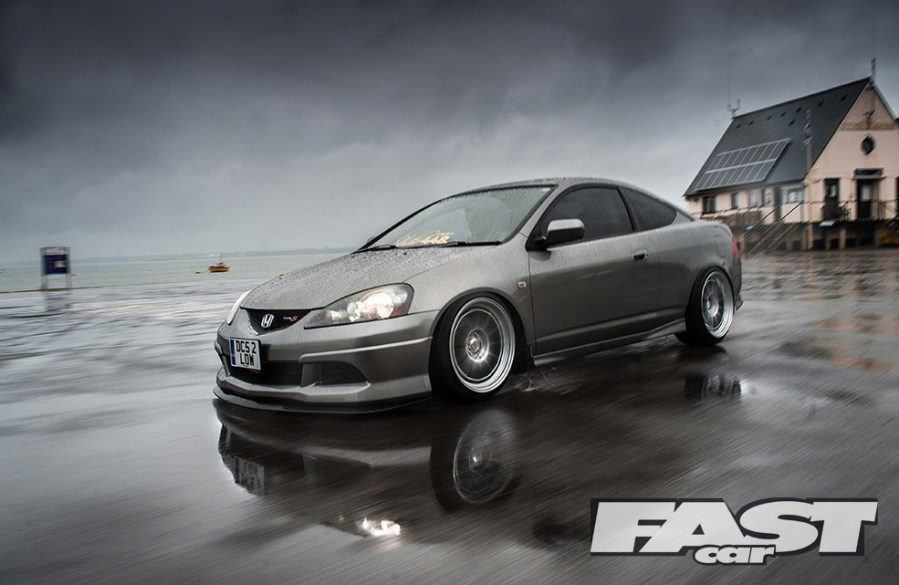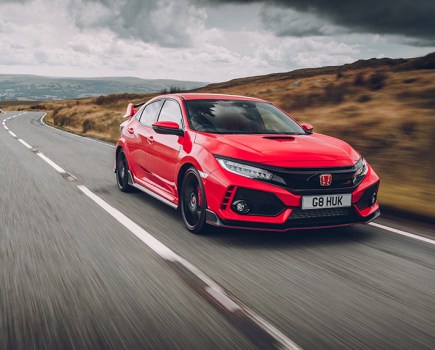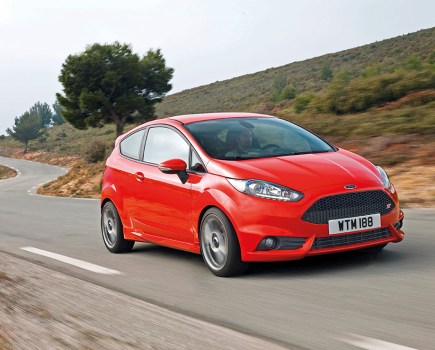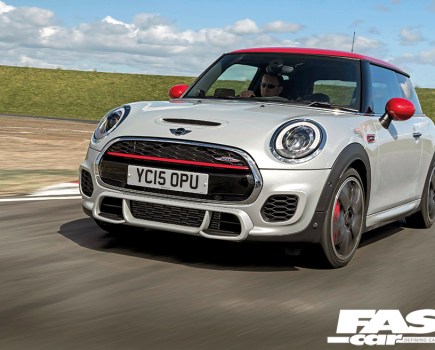Looking for your next build? Here are some of the best Honda project cars to buy in today’s market, covering a variety of build types.
Like the other major Japanese marques, Honda has built some true tuning gems in the past. So, it makes sense to consider its back catalogue when picking out your next project car. If you’re unsure where to start, I’ve picked out some personal favorites to get the cogs whirring in your brain, and hopefully they’ll be something for everyone.
How I chose the cars
Having been immersed in car culture for many years, I’m familiar with what’s hot, what’s not, and what might fly under the radar. So, no matter what your budget or build intentions, there should be something of interest here from quite a varied selection.
Without further ado, let’s get into it shall we? Here are the best Honda project cars that you can buy today.
Best Honda project cars
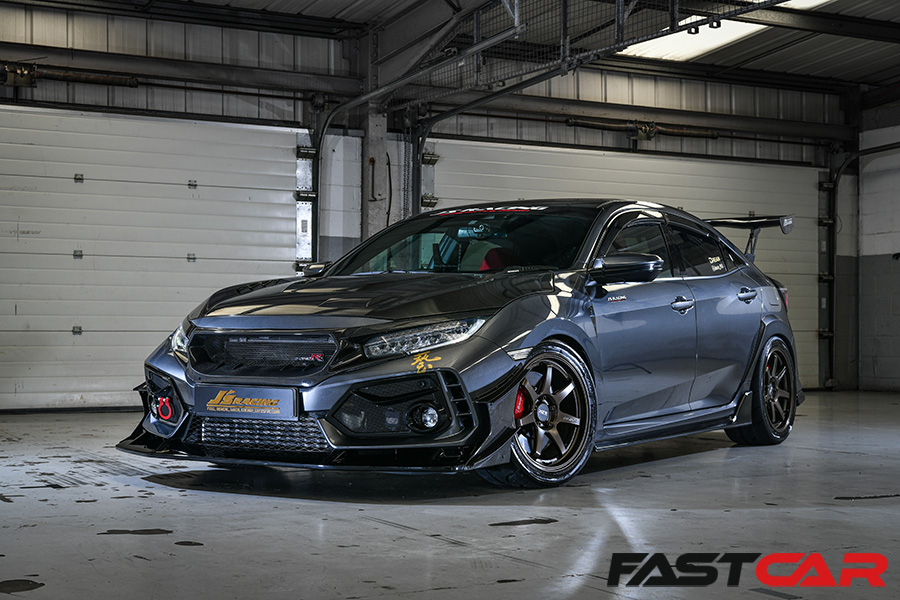
Honda Civic Type R FK8
As far as Honda project cars go, the Civic Type R is arguably the model that most people will jump to – and with good reason. The FK8-generation car in particular is a real thoroughbred; one of the best hot hatches ever produced from a dynamic perspective. It was also the first Type R to be sold worldwide, so you can buy one no matter where in the world you live. As such, the aftermarket for these is truly massive, and the level of community support that exists is ideal for rookie project builders or Honda virgins.
Fresh out the box, you get a front-wheel drive hot hatch with a turbocharged four-pot that produces around 320hp, which to be honest, is enough for many people. However, if you do go chasing more power, make sure not to forget to upgrade the car’s chassis and suspension components too – you’ll need them to be strong if you want to avoid overbearing torque steer/understeer from the FWD package. As for aesthetics, you’ll either love or hate the FK8. It’s ideal for people who want a car that shouts about its presence, but might not be the best choice for somebody that wants to build a subtle, clean daily driver.
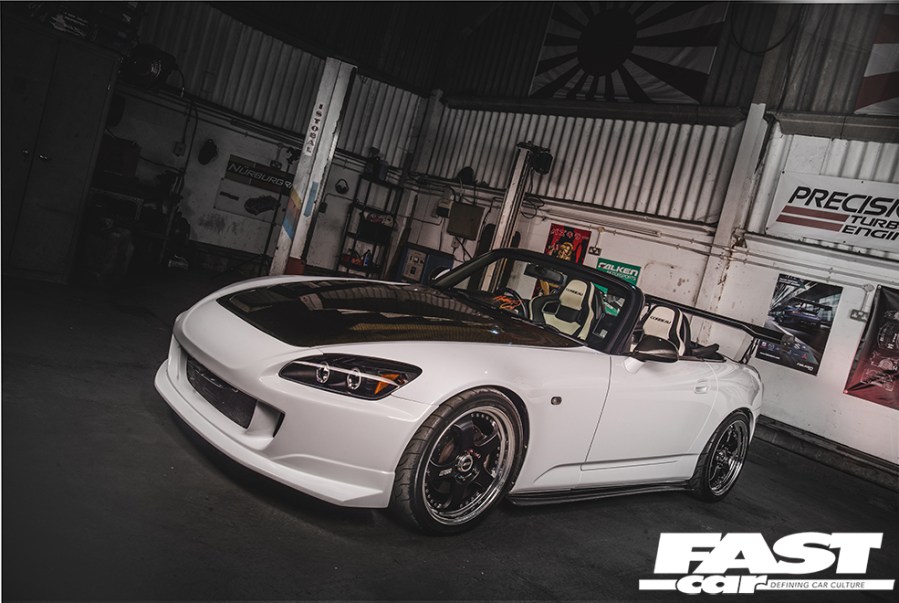
Honda S2000
Next up, a modern classic. The Honda S2000, with its near-9k redline, has one of the most charismatic engines from the 2000s (regardless of whether you get the F20C or F22C1). In fact, many people would argue that this era of naturally-aspirated VTEC power units represents peak Honda tuning territory. Sure, the newer engines with forced induction might have higher potential, but the old B-Series, K-Series, and F20/F22s do a great job of feeling fast in real-world scenarios while also being incredibly theatrical in their power delivery. So, if you want a car that makes you feel good, rather than one that wins a game of top trumps, then you should certainly look into the old-school VTECs.
Of the bunch of cars from this time period, the S2000 offers perhaps the most traditional blueprint for a sportscar: front-engine, rear-wheel drive, two-door convertible. That means if you tune it right, it’ll be incredibly rewarding through the twisties, and aesthetically it has the sort of sporting appeal that you’d want from an agile, soulful, enthusiast’s ride.
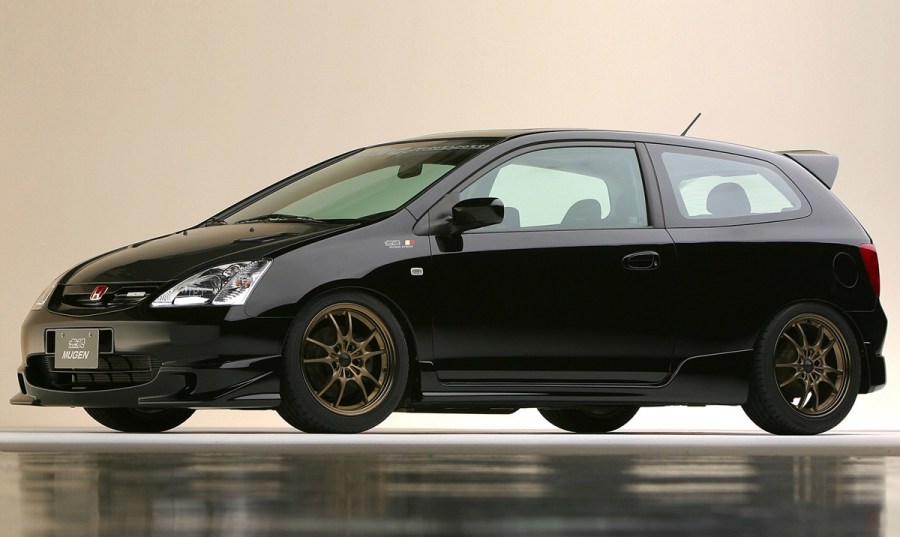
Honda Civic Si
Honda has a long history of producing sporty Civics, but as I said before, it wasn’t until the FK8 that the Type R graced North American shores. So, what can US audiences buy if they don’t have the budget to fork out for a nearly-new FK8? Well, the answer is a Civic Si – in one of its many guises. Often, the go-to option is the sedan-style Si models of the late ’90s, but while those are timeless tuning classics, I want to highlight some of the lesser-heralded stateside alternatives, starting with the EP3.
This little breadvan hatch never got too much love in North America, but in Si form it does have something to give. Namely, 160 naturally-aspirated horses in a platform that weighs only 2744lbs. That won’t rip your face off, but 0-60 in just over 7 seconds is a good starting point, with potential to become genuinely quick if you help it a little with some bolt-ons.
The downside? Well, in comparison to its JDM and EUDM EP3 Type R counterpart, it pales in comparison. It’s about thirty horsepower down on the full-fat foreign alternative, and it has a lowly redline of just 6800rpm. In an early 2000s VTEC car, that’s surely missing the whole point! Still, there are naturally still many similarities between the chassis of the different EP3 models, and any upgrades that the Type R does have over the Si can be retrofitted. The same goes for the engine if you really want the K20A experience.
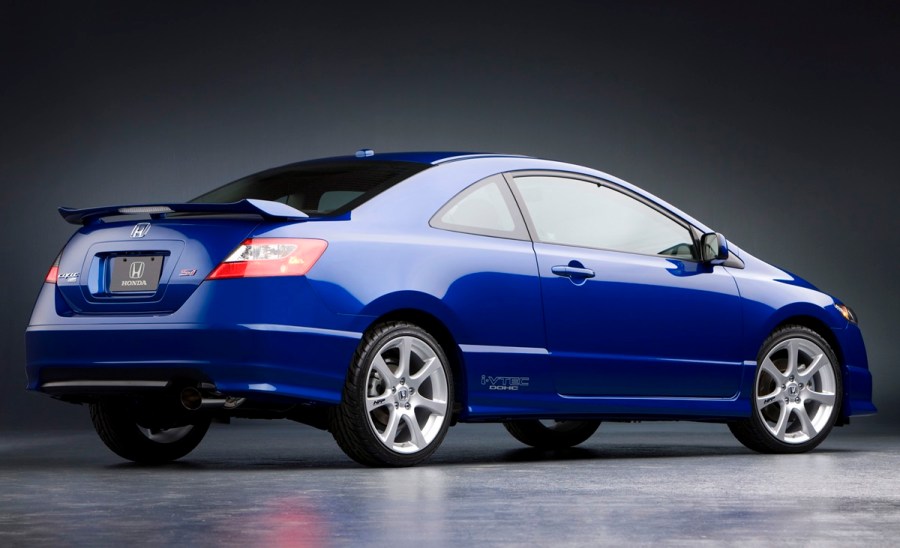
FG2 Coupe
Fast forward a few years and there’s another Civic Si with a very different look that’s worth considering. In the States, Honda offered the Si in either FA5 sedan or FG2 coupe guises; the former often considered a shadow of the FD2 Type R sedan. The FG2, however, is a genuine novelty, offering Civic goodness in an unusual two-door coupe silhouette. So, unless you plan on creating an FD2 replica, I’d get creative with the cooler FG2 coupe.
Mechanically, this era of Si is much closer to its exotic Type R counterparts, boasting 197hp compared to the European FN2 Type R‘s 201hp (though, neither come close to the JDM FD2). Either way, a Civic Si could be either a cheap little street project, or the basis for a stripped-out, highly-fettled amateur track car. Though, if you live in the UK and can get old Type Rs easily, do that instead. It’s what we did…
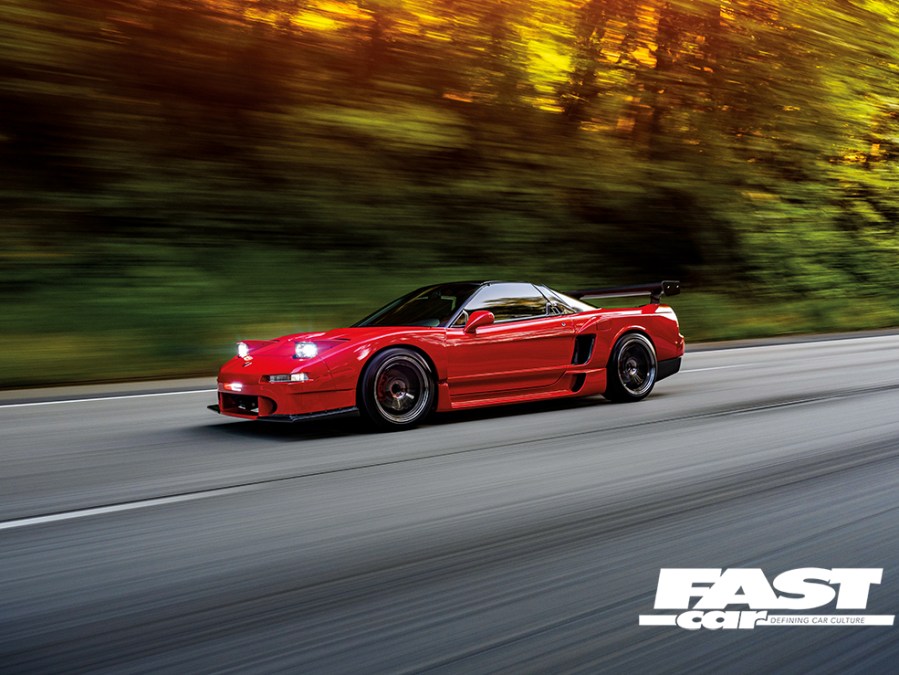
Honda NSX
Got a lot more cash to splash? Well let me offer you the total opposite of a Civic Si – the first-generation Honda NSX. This mid-engined, six-cylinder supercar was designed to shake up the pecking order at the top of the automotive tree, and it certainly got the Italians nervous. Back then, the motoring press had their eyebrows well and truly raised as the Japanese came onto the scene and blew the complacent late ’80s entry-level Ferraris out of the water. Although the NSX is certainly a supercar, it’s fair to say that it has been welcomed into the wider JDM modifying and tuning category. In fact, given its age and (lack of) performance relative to modern supercars, perhaps it’s fairer, even, to consider it as more of a tuner icon instead nowadays.
Admittedly, the aftermarket won’t be as expansive as that of the more common project car choices on this list, and the options you do find are likely to carry a heavy price tag given the status of the car. That said, if your budget is bigger than most, you can turn the NSX into a touge car to beat all touge cars. It’ll be a pretty rudimentary experience at first though – the steering is heavier than you might expect, especially on the earliest model years – but show this car a bit of TLC and you’ll soon realize why it caused such a stir in its heyday.
Which one should I buy?
For the best driving experience, choose a post-1997 model. These gained an extra 20 horsepower, raising the car’s output to 290hp, as well as a six-speed manual gearbox over a five-speed, and electronic power steering to make changing direction less of a work out. Of course, Type S, Type R, and 21st Century facelift versions of the NSX all exist too, but expect to pay a premium on top for those.
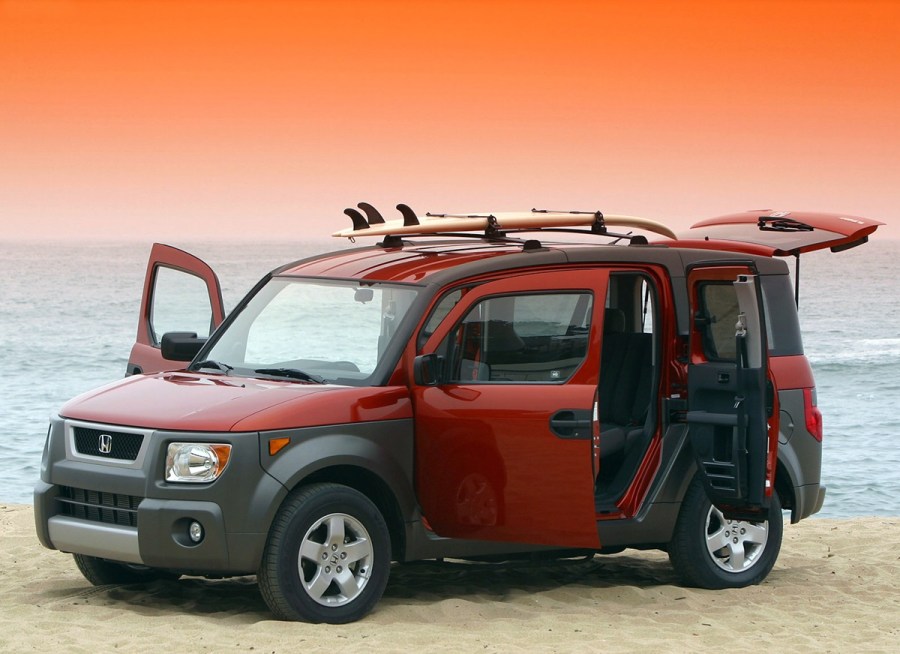
Honda Element
Ok, so you want to go overlanding? Well, the obvious Honda choice for an off-road build is the CR-V. There are multiple generations to choose from, each sold globally. But in reality, they’re just a bit… dull. Instead, if you’re going to be taking the scenic route, you might as well as buy a fun car to complete those adventures in. For me, Honda SUVs don’t get any more interesting than the Element.
The exposed plastic grey won’t be everyone’s cup of tea (in fact, it was deleted on later model years) but there is genuine utility behind that decision – if they get beat up, it’ll cost you less to replace them. As an overlander, that’s gotta be a good thing. Another draw is the car’s clever doors – they’re of the suicide variety, like the Mazda RX-8, with the party piece being that there’s no B-pillar. That means that, with its flat floor and highly adjustable/removable seats, the Element can become a sort of adventure lounge. Ideal for when you stop off for a picnic at a beauty spot.
Overlander or street build?
So, what about its actual off-roading credentials? Well, the Element has got a K24 engine under the hood, which is hard to kill, albeit a bit thirsty. 152hp and 161lb ft of torque is far from the most powerful option you’ll come across, but as ever, you can bump those figures up a notch with some aftermarket parts if you want. As mentioned though, strength and robustness is what the stock K24 is all about. There are plenty of chassis similarities with the second-gen CR-V, making both of these cars pretty dependable vehicles off-road. For this use, you’ll absolutely want the 4WD version rather than the (somewhat pointless) FWD version though.
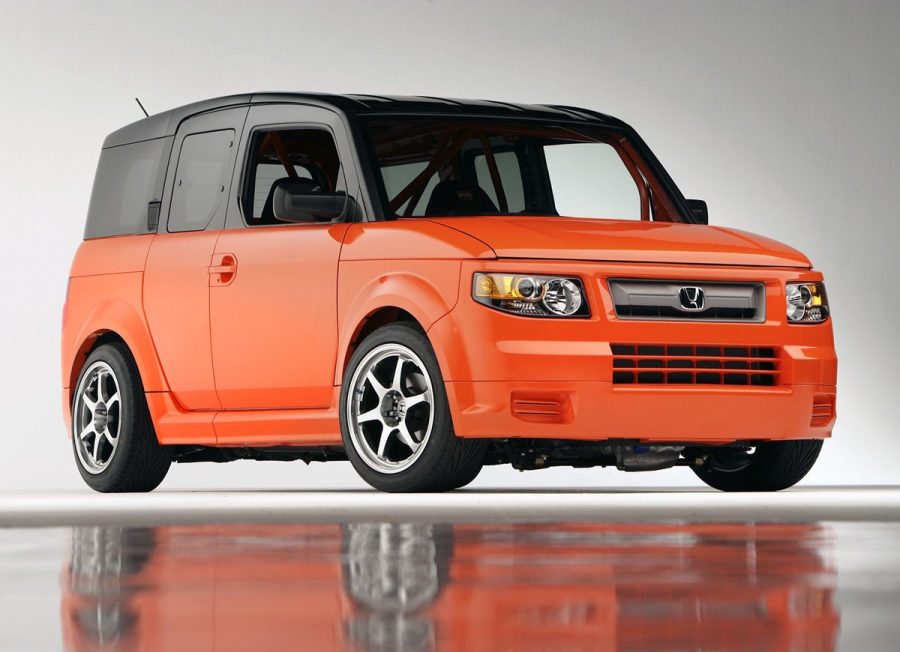
If you do go for an FWD Element for some reason, perhaps to build a show car, daily driver, or street build, you have the opportunity to create something seriously unique. Elements are fairly rare to begin with, and visually modified ones are pretty much never seen. So if you want to stand out with a mad blocky Honda, the possibilities with the Element are endless.

Honda Integra
A personal favorite of mine, the DC2 and DC5 platforms are essentially the coupe cousins of the EK9 and EP3 Civics, and as their silhouettes would suggest, offer marginally more performance when stock in sporty trim. The DC2 is a classic tuner car, but by comparison the DC5 is slightly more slept on. So for that reason, I’m going to focus on the DC5 here.
To begin, let’s compare the DC5 Integra Type R (JDM only) with the EU EP3 Civic Type R. Both cars have a K20A under the hood, but there are notable differences. The Japanese market DC5 Type R outputs 217hp, whereas the K20A2 in the EU EP3 cranks out just under 200. So, the JDM DC5 is understandably quicker and faster than the EU EP3, and it’s also got a slightly stiffer chassis. Importantly, the JDM DC5 got an LSD as well, whereas the European EP3 only has an open diff. Overall, you can see why it’s worth importing a JDM DC5 Type R to Europe (though as a side note, the JDM EP3 Type R is much closer to the DC5, albeit still not quite as good). The one downside of opting for a DC5 Integra over an EP3 Civic, however, is the cost. Imported Integras are pricey.
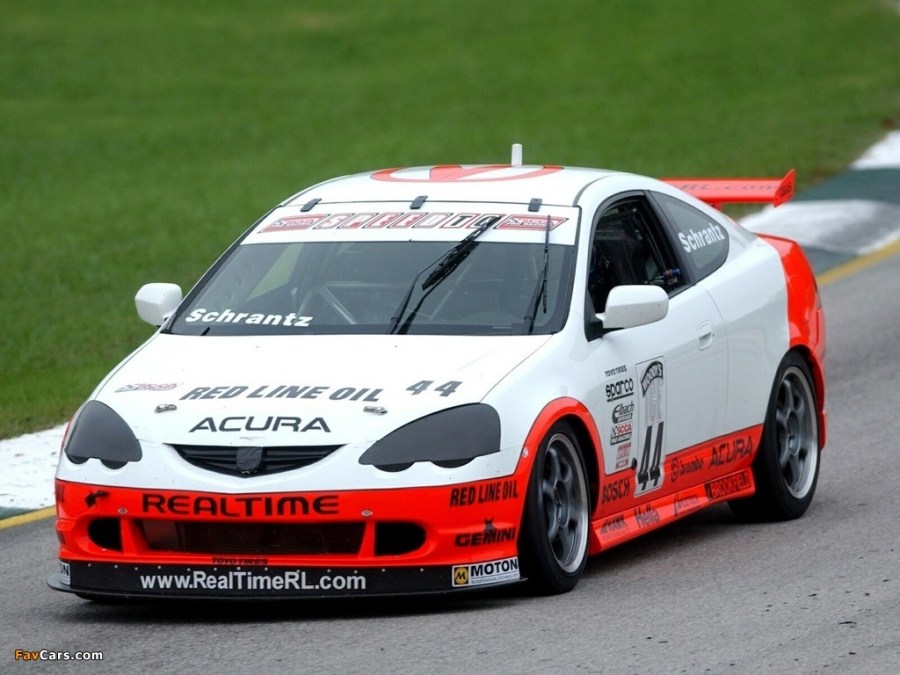
Acura RSX
Now, you might have noticed that I haven’t mentioned the North American market yet, and that’s because the situation is a little different. In the states, the DC5 was officially imported and can readily be found as the Acura RSX, though this does not include the Type R package that Japan got. Instead, the best trim level of the RSX family is the Type S, which carries the same K20A2 powertrain as the EU EP3 Civic Type R. However, also like the EU EP3, it lacks the LSD or upgraded chassis components that you’ll find on the JDM models.
Still, the good news for North American readers is that if you’re sold on building a DC5 Integra project car, it’s much easier to do so than it is for your European counterparts, given the prevalence of the RSX Type S. If you’re considering a track or touge build, this car would definitely be a good starting point.
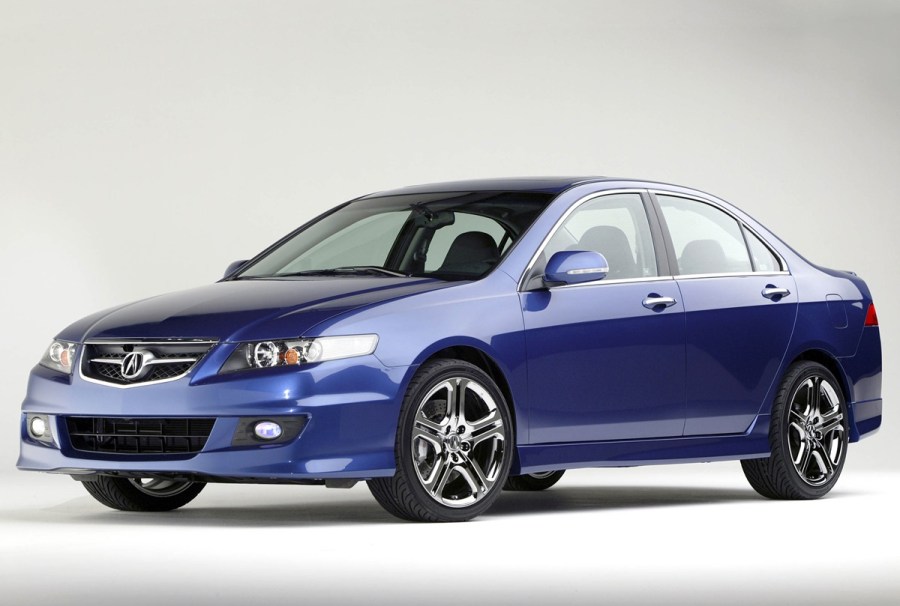
Acura TSX / Accord CL7/CL9
Next up, the CL7 could be sculpted into a variety of different builds. Stance makes sense, as does VIP, and if you start with an upper trim level then you could even turn yours into a competent track/touge car. But to allow you to make an informed decision, I’ll give you a glimpse of what the different CL7 trim levels offer.
Regional differences
The top of the pile is the Accord Euro R. This, rather deceptively, is a Japan-only special which shares the K20A engine with the JDM Integra Type R DC5 that we just spoke about. So, with 217hp at its disposal, it’s quick, albeit not as quick at the DC5 due to its comparative weight. Still, if you need a car that’s more practical/spacious, this is where the Accord Euro R shines compared to the usual crop of Type R choices. Expect to pay a premium for one of these though.
Instead, the next best thing you can hope for is an Acura TSX. In fact, due to the 25-year import rule, this is your only option if you want to run this platform in North America. It has quite a beefy motor under the hood – a K24A2, which is related to the K24A in the Element featured above. However, this engine produces a fair chunk more horsepower than the one in the SUV; around 200hp (205hp in 2006-2007 models) which is plenty to work with as a starting point. Crucially, you can indeed get the TSX with a six-speed manual gearbox, so its sporting potential is legit.
The weakest of the sporty variants of this platform is the European market Type S. This Accord got a more economical variant of K20 engine compared to the JDM Euro R, and as such only output 153hp. The trim models below that are real grocery-getters, and honestly not worth looking at unless you’re going for a purely aesthetic build.
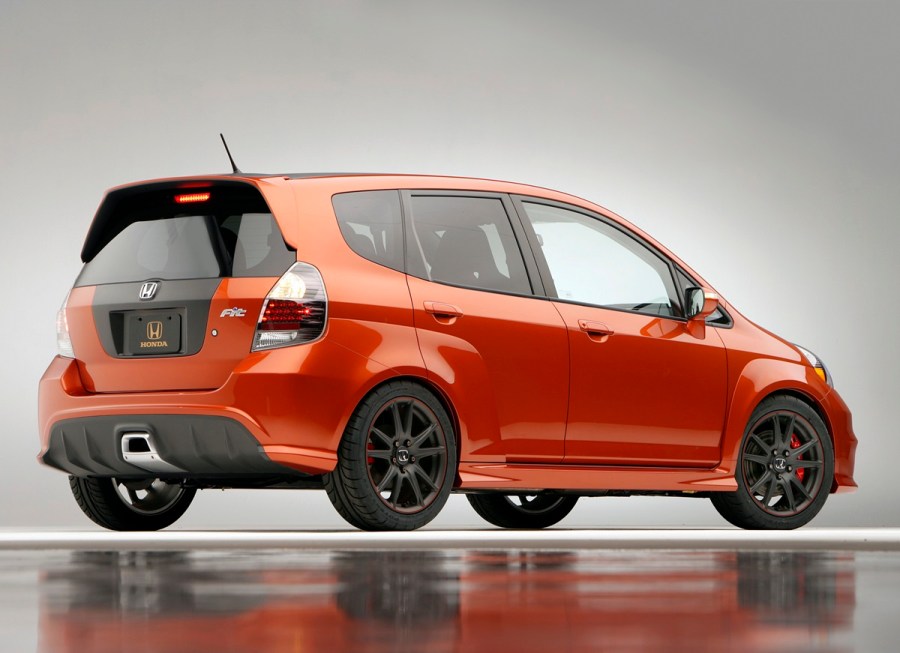
Honda Fit / Jazz
Not too long ago, car enthusiasts wouldn’t be seen dead in one of these. However, in recent years, it seems as though we’ve had a collective epiphany and realized what the first-gen Honda Fit had to offer. For its segment, this little car handles surprisingly well, is deeply practical, and can be picked up for relative pennies. With tuning and modifying in mind, it’s a good idea to start with the 1.5-liter L15A VTEC model, as you can ramp this thing up from 109hp to at least 50% more power with the right mods. Or, just K-swap it! Plus, while the CVT gearbox should be avoided at all costs, you can mercifully find these with a manual too.
So, sure, it might be a bit of a wildcard, but if you’re working with a tight budget and want a car that has a large (and growing) aftermarket support, as well as being practical, then this little compact MPV makes a lot of sense. Still not convinced? Check out the vast array of Fit builds on YouTube, like this one.

